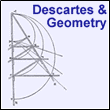forum
library
tutorial
contact

Flight Experiments Study Use of Vortex
by Andrew Bridges, Associated PressSpokesman Review, December 6, 2001
|
the film forum library tutorial contact |

|
Flight Experiments Study Use of Vortexby Andrew Bridges, Associated PressSpokesman Review, December 6, 2001 |
Scientists hope planes can conserve fuel by drafting over long distances, like geese
EDWARDS AIR FORCE BASE, Calif. -- Taking a cue from the world of geese, scientists are developing a system that will allow airplanes to fly autonomously in tight V-formations over long distances.
For geese, the carefully arranged formation saves energy on migratory flights. Scientists hope one day passenger, cargo and military planes can mimic the flight pattern to cut fuel consumption by as much as 20 percent.
 Geese cut resistance by drafting, a technique also used in automobile and bicycle racing, where racers line up one behind another to cheat the wind.
Geese cut resistance by drafting, a technique also used in automobile and bicycle racing, where racers line up one behind another to cheat the wind.
The Autonomous Formation Flight project instead makes clever use of the swirling, horizontal tornado of air that flows from another plane's wing tips to literally surf that vortex.
By dipping a single wing into the upward-flowing portion of the vortex, the plane can use the additional lift it provides to cut fuel consumption.
"If you can find where that upward wind is, and put your airplane in it, you are essentially riding a wave," said Dick Ewers, a retired Marine Corps pilot helping test the system.
Pilots normally avoid vortices that persist for miles -- and minutes -- in the wake of other aircraft. Indeed, officials suspect such a whirl of air may have contributed to the recent crash of American Airlines flight 587 in New York.
The goal of the joint National Aeronautics and Space Administration, University of California, Los Angeles and The Boeing Co. project is to exploit their potential benefit.
"It is possible you can use something that can be a detriment to flight -- that you can use the vortex as an enhancement as well," said Robert Meyer, director of aerospace projects at NASA's Dryden Flight Research Center at Edwards, where the program is being tested on a pair of F/A-18 fighter planes.
The system was first tested in flight in February. On Wednesday, two of the NASA jets demonstrated for the first time what scientists had long suspected: that formation flying can provide significant fuel savings.
During a 96-minute flight that took the jets cruising at 40,000 feet into Nevada and back, the trailing aircraft spent most of the time with its left wing inserted in the vortex spiraling off the lead jet's right wing.
The two planes flew just 55 feet apart, close enough for the glint of the sun on the lead aircraft's aluminum wing to flash in Ewers' eyes as he trailed.
"We shouldn't be waxing that airplane so much," Ewers quipped. A dozen engineers at Edwards monitored the flight on multiple video screens at the base's control room.
Although the planes flew the same distance, initial results suggest the second plane used 660 pounds, or 12 percent, less fuel than did the lead plane.
"We could have extended the range of the aircraft by 117 miles," said Gerard Schkolnik, the project's manager at NASA. Scientists are targeting savings of up to 20 percent.
The system relies on Global Positioning System units and an advanced autopilot system to work. By pinpointing each plane's position in space -- and shuttling that information from one to the other -- the system allows the jets to maintain distances that vary by a foot.
Scientists have already used the system to allow the planes to fly autonomously in formation and, separately, to locate the vortex or "sweet spot" that makes the fuel savings possible. The next goal, if flights resume next summer, is to test how well the system can both find a vortex and keep the trailing plane plugged into it. However, NASA's ongoing budget crisis has made the $8 million project's future uncertain.
The mix of hardware and software theoretically could allow the planes to hold their positions for hours at a time, without constant human intervention.
"To do it manually for a pilot is almost prohibitively tiring and demanding," Ewers said.
Brent Cobleigh, the project's chief engineer, said the technology could also allow a single pilot to control swarms of robotic aircraft or to ease the tricky business of refueling airplanes in flight from airborne tankers.
The experimental system is at least five to 10 years away from entering common use, he said.
learn more on topics covered in the film
see the video
read the script
learn the songs
discussion forum
